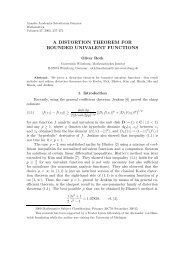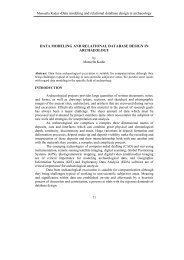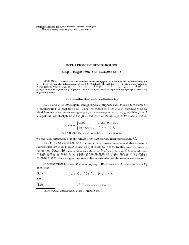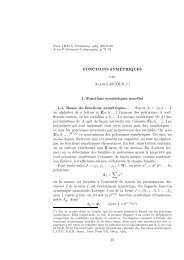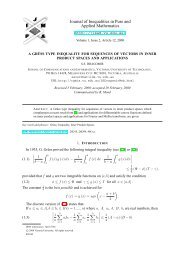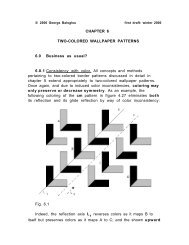SUPERNOMIAL COEFFICIENTS, BAILEY'S LEMMA AND ROGERS ...
SUPERNOMIAL COEFFICIENTS, BAILEY'S LEMMA AND ROGERS ...
SUPERNOMIAL COEFFICIENTS, BAILEY'S LEMMA AND ROGERS ...
Create successful ePaper yourself
Turn your PDF publications into a flip-book with our unique Google optimized e-Paper software.
4 S. O. WARNAARFor k = 2 this identity is due to Euler. For general k the above result wasfirst obtained by Bressoud [11].3. Supernomial coefficientsIn this section we introduce A n−1 generalizations of the q-binomial coefficientsand show how, in the case of A 2 , the invariance property (2.2) can begeneralized. This is then used to derive A 2 Rogers–Ramanujan-type identitiesfor all moduli. First, however, to serve as a guide for subsequent generalizations,some of the equations of the previous section are rewritten in manifestA 1 form.3.1. A 1 again. As is often convenient when dealing with root systems of typeA n−1 , we introduce n variables k 1 , . . . , k n constrained to the hyperplane k 1 +· · · + k n = 0. We denote k = (k 1 , . . . , k n ), ρ = (1, . . . , n), and for arbitraryv ∈ Z p we set |v| = ∑ pi=1 v i, so that, in particular, |k| = 0. The Cartan matrixof A n−1 will be denoted by C, i.e., C i,j = 2δ i,j − δ |i−j|,1 , i, j = 1, . . . , n − 1.Now assume n = 2. Then k = (k 1 , k 2 ) = (k 1 , −k 1 ), ρ = (1, 2) and C = (2).We can then rewrite equation (2.1) in vector notation as⎧⎨ 1for k 1 , k 2 ≤ L 1(3.1) S(L, k) = (q) L1 −k 1(q) L1 −k 2⎩0 otherwise.where L = (L 1 ).Similarly, the invariance property (2.2) becomes(3.2)M∑L=0q 1 2 LCL S(L, k)(q) M−L= q 1 2 (k2 1 +k2 2 ) S(M, k),where, generally, for v, w ∈ Z p , vAv = ∑ pi,j=1 v iA i,j v j , (a) v = (a) v1 . . . (a) vpand ∑ wv=0 = ∑ w 1v 1 =0 · · · ∑w pv . p=0The equations (2.3) and (2.7) that served as input in the derivation of theRogers–Ramanujan-type identities become in the new notation∑ ∑ɛ(σ)q ∑ 2i=1 (k i−σ i )k(3.3)iS(L, 2k − σ + ρ) = δ L1 ,0.σ∈S 2and(3.4)|k|=0|k|=0∑ ∑ɛ(σ)q 1 ∑ 22 i=1 (2k i−σ i +i) 2 S(L, 2k − σ + ρ) =σ∈S 21(q 2 ; q 2 ) L1,where S n is the permutation group on 1, 2, . . . , n and ɛ(σ) is the sign of thepermutation σ.



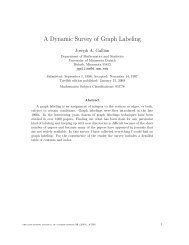


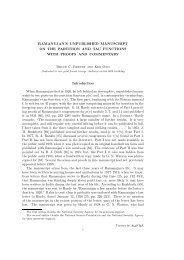
![(.,t ] and [s, .) , where [s,t ] = {s' GT; s ¤ s' ¤ t} , (.,t ] = {s' GT; s' ¤ t} and ...](https://img.yumpu.com/43303393/1/184x260/t-and-s-where-st-s-gt-s-a-s-a-t-t-s-gt-s-a-t-and-.jpg?quality=85)


